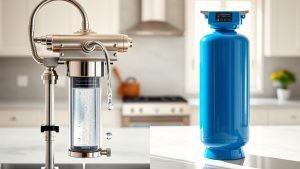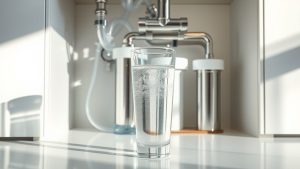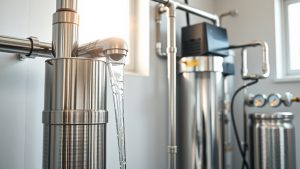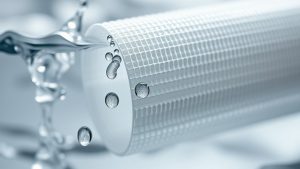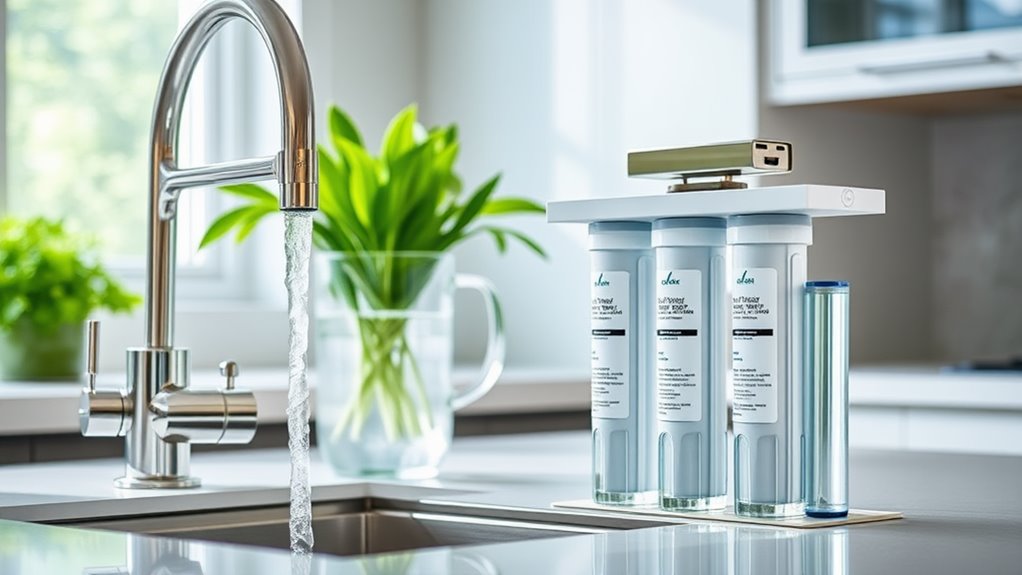
Whole house reverse osmosis (WHRO) systems purify water at every tap in your home by using advanced technology that forces water through a semi-permeable membrane under pressure. This process effectively removes contaminants such as salts, bacteria, and viruses. Unlike conventional water softeners, WHRO systems address a broader spectrum of impurities, ensuring consistent water quality throughout your home. With multiple components designed for thorough filtration, you'll discover important details about their installation and efficiency.
When considering the quality of water in your home, whole house reverse osmosis (WHRO) systems emerge as a powerful solution that guarantees every drop is purified. These extensive filtration units are designed to guarantee that the water flowing from every tap meets the highest standards of safety and cleanliness.
WHRO systems utilize advanced reverse osmosis technology, where water is forced through a semi-permeable membrane under pressure. This process effectively removes a wide range of contaminants, providing you with superior water quality for drinking, cooking, and other household uses.
The core functionality of reverse osmosis relies on applying pressure to push water through a specialized membrane. This semi-permeable membrane contains tiny pores that selectively allow only water molecules to pass, while blocking larger molecules and impurities, including salts, bacteria, viruses, and pesticides.
Reverse osmosis utilizes pressure to filter water through a semi-permeable membrane, effectively removing impurities and contaminants.
By reversing the natural osmosis process, WHRO systems create a flow from a less concentrated solution to a more concentrated one, effectively flushing away the contaminants. As a result, you receive filtered water that's cleaner and safer for everyday use.
One of the key benefits of a whole house reverse osmosis system is its extensive filtration capability. When you install a WHRO system, every drop of water entering your home is purified, eliminating the need for multiple under-the-sink filters in various locations. This non-selective purification method not only simplifies your water treatment process but also guarantees that you enjoy consistent water quality from all faucets throughout your home. Cleaner water contributes to potential health improvements, enhancing your overall well-being and creating a better living environment.
The installation of a WHRO system typically requires connecting it to the main water supply line entering your home. Given the complexity of the setup and configuration, professional expertise is often necessary to guarantee peak performance.
A WHRO system comprises multiple components that work together to achieve thorough filtration, and proper installation is critical for the system's efficiency and longevity. Some systems can even be adapted to treat water used outside the home, offering versatility in water treatment solutions.
When comparing WHRO systems to other water treatment methods, you'll find that reverse osmosis can address a broader spectrum of contaminants. Unlike water softeners, which primarily focus on mineral removal, reverse osmosis systems go further by filtering out not just minerals but also a variety of impurities.
This makes them a superior choice for those seeking extensive water purification.
Conclusion
In a world where you might think you need a PhD to sip pure water, whole house reverse osmosis swoops in like a superhero, banishing impurities to the netherworld. Imagine your tap as a crystal-clear oasis, while contaminants are exiled to a hidden dungeon. With this system, you're not just drinking water; you're hosting an exclusive party for H2O that's free from pollutants. So, why not let your home join the ranks of elite hydration palaces?
